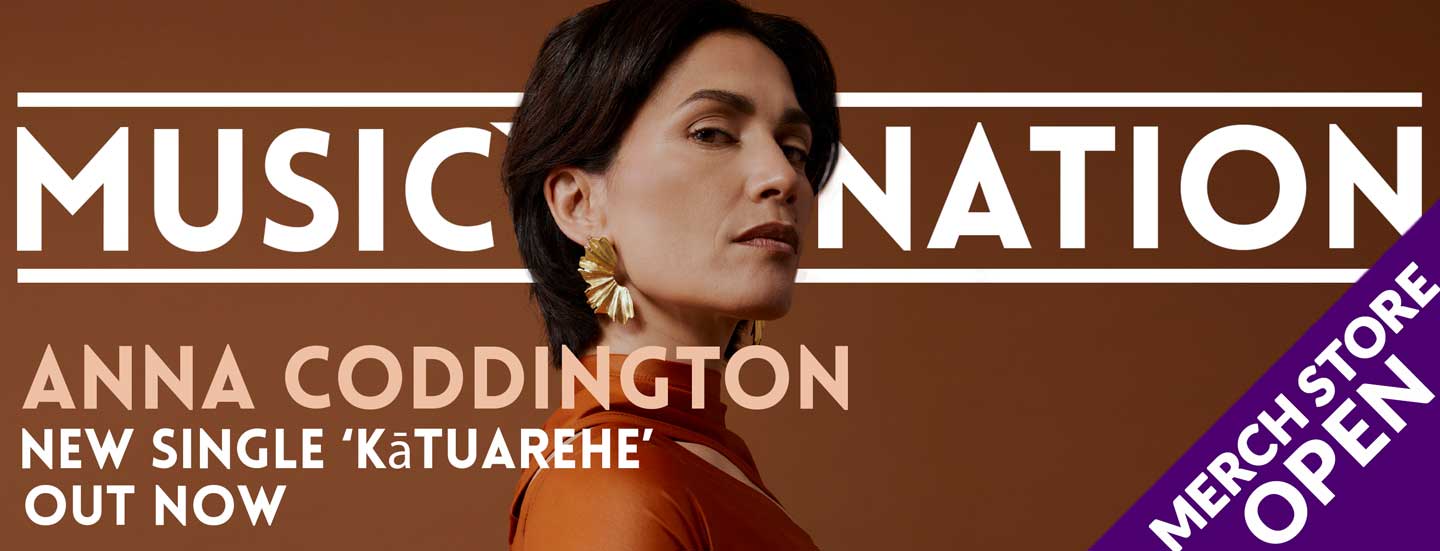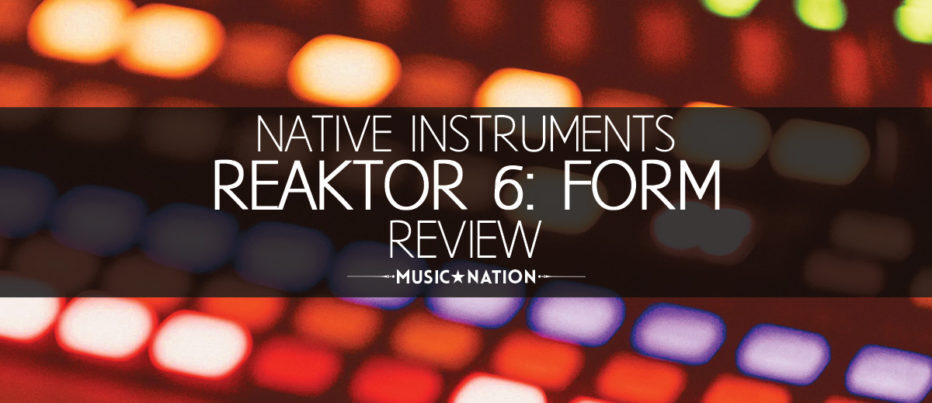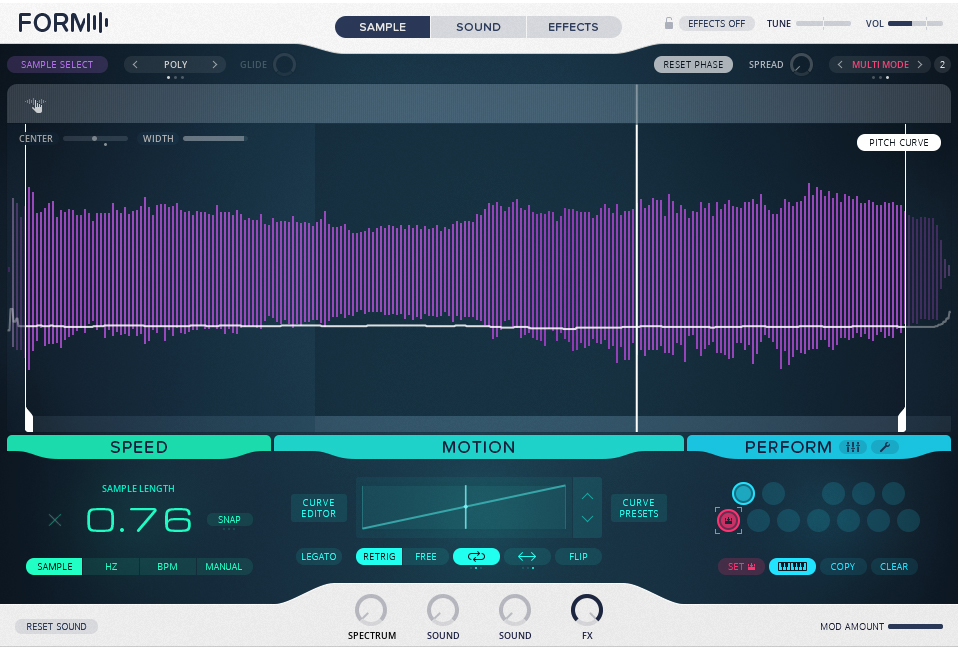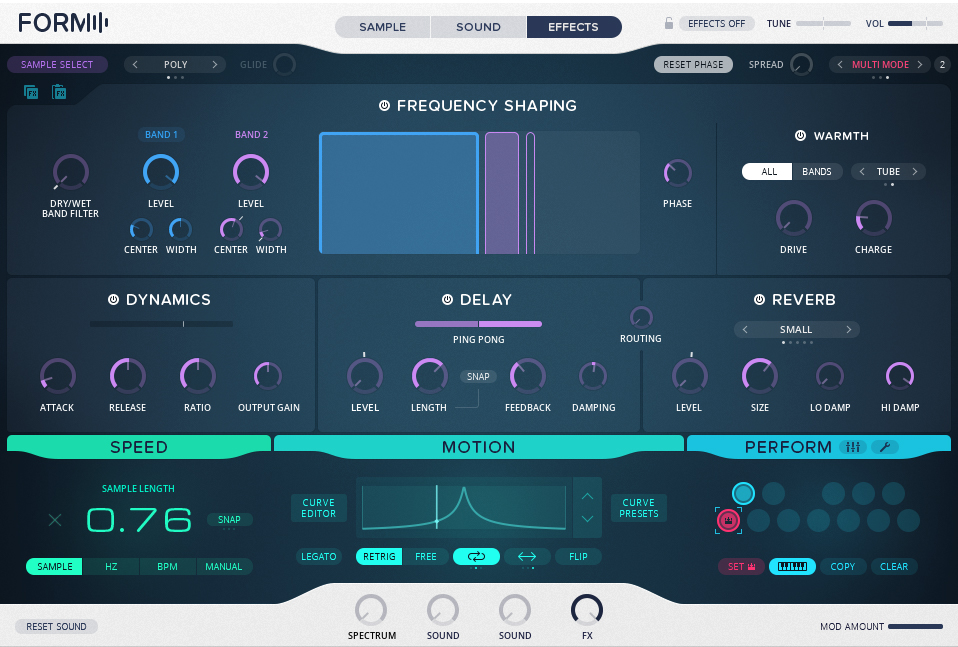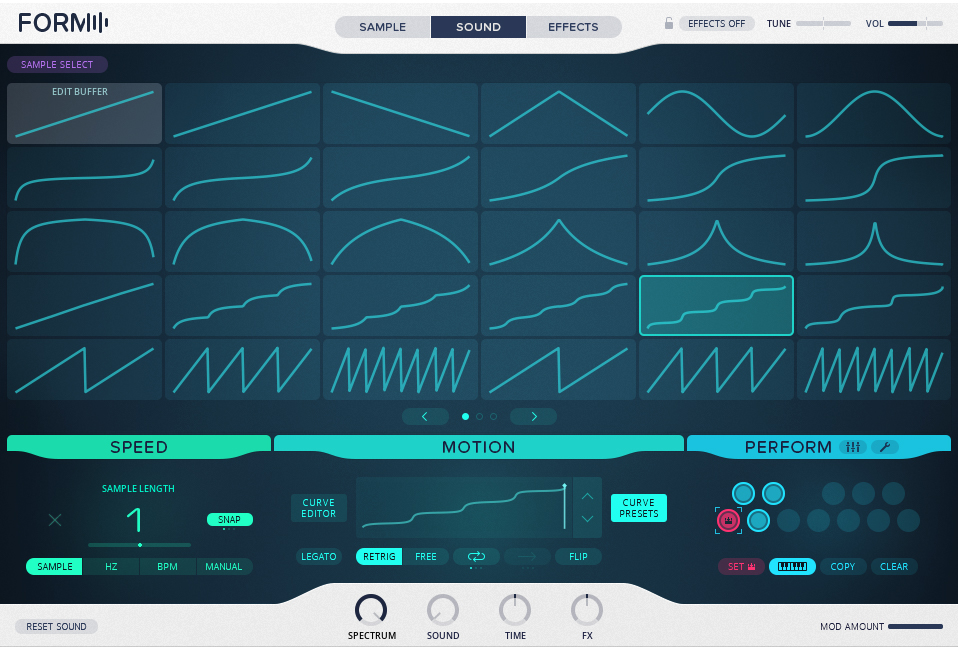NATIVE INSTRUMENTS FORM – FUSION RESYNTHESIS
Welcome to our first look at Native Instruments’ new resampling synth, Form. As far as software synths are concerned, the Reaktor platform is one of the more complex and difficult to learn so an expansion for it like Form needs to meet the same high levels of profundity…or does it?
Having doodled a little with Reaktor when it first came out, I remember the synth platform being a real beast to learn, and I suspect that it probably scared a lot of people off due to its complexity. Komplete 11 comes bundled with other equally impressive synths meaning Reaktor may have been left mostly untouched.
Clearing a few days in my schedule to focus on this review, I am ready to dive in and hopefully get the fundamentals at least mastered.
Wish me luck
Overview
Form v1.1 is an expansion for Native Instrument’s Reaktor 6 Professional or the free Reaktor Player platform. Reaktor is available as a standalone purchase or as part of the Komplete 11 bundle, with Form being a hybrid mix of traditional synthesis and a contemporary sample re-synthesiser.
Reaktor 6 can be used in stand-alone mode or as a VSTi instrument in your DAW of choice.
Form includes over 400 custom presets and integrates into the Komplete Kontrol S-Series keyboards perfectly.
If you are feeling somewhat put off by Reaktor 6’s rather intimidating complexity, you do not need to worry. Form is an expansion, but it works more like a stand-alone synth within the Reaktor environment, so you don’t need to mess with Reaktor at all, other than to load it.
This will give you plenty of time to become comfortable with Form while doodling in Reaktor when you are feeling brave.
First Impressions
I was quite relieved to find Form is an almost independent synth in its own right, separate from Reaktor. I was expecting a rather steep learning curve, with block diagrams and modular connections – but once Form is loaded inside Reaktor the workflow is rather intuitive and obvious, almost simplistic, dare I say.
The basic idea with Form is to input your own sample data which the synth uses as its core oscillator. Start by using a preset, or preferably, loading in one of your own 30-second recordings. Form then plays back the sample and layers it with effects, modulation and a secondary synth oscillator to create some potentially wild results. It is much deeper than that, but at a basic level that is all you need to do.
Form reminds me of a tape head in the way it scrubs over the sample, indicating the area currently being resampled. By cycling through some of the presets you get a feel for how the synth works, and although the automation looks complex at first, once you understand the basics it does not take long to start developing your own ideas.
The three sections of the synth are clearly labelled Sample, Sound and Effects, with the lower half of the screen dedicated to speed, motion and performance controls.
Your sample can be pitched, formant shifted, distorted and a whole bunch of other equally crazy processes, with, of course, your more typical compression, reverb and delay included for emphasizing the finished output.
The most effective controls on Form are the speed/motion/performance controls. The very clever motion controls feature a bunch of premade curves for the playback resynth head to follow, or you can build your own from scratch.
Form instinctively works as a texture pad synth, ambient sound designer or even straight FX generator, but the more that I dug into the workings, the more I found really nice sounding strings, piano-type sounds and synth leads – albeit somewhat stranger-sounding than your typical synth.
Form is a difficult synth to describe as it is so dependent on its sample input. It does the whole robotic, distortion Skrillex thing very well, but the more intricate sounds rely on a fair amount of good luck – or happy accidents – depending on how you look at it.
Ultimately, I don’t think this synth is limited by a specific genre, but it will definitely excel for folks wanting more characteristic results.
Digging Deeper
While learning Form I found much of my experimentation was guesswork and trial and error. Mostly I found creating new sounds quite logical and the more I understood the controls, the finer I could tune my creations.
Form can become quite complex if you want, but for the casual user, I do not think you will struggle to come up with impressively creative sounds. There is no doubt plenty of depth here for anyone wanting to push sonic boundaries.
The included presets are mostly tame. Once you work out some of the tricks with Form, you will in no time be making your own collection of favourites, never to look back on the supplied ones.
The key benefit of Form is, without a doubt, the resynth sample section. The ability to import your own samples makes this already flexible synth almost infinitely creative. It is also a great opportunity to breathe some life into your old synths. Pretty much any sound source is on the cards for experimentation in Form.
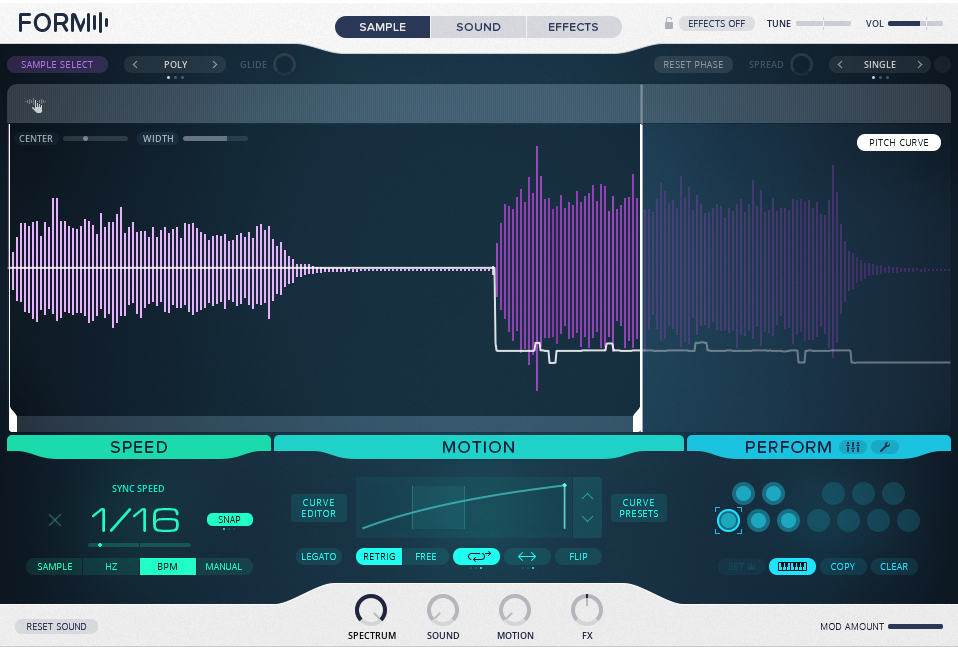
Conclusion
This is such an exciting synth, easily one of my favourites. The clever workflow rewards experimentation, but never leaves you feeling lost for inspiration.
I have to say that Reaktor is a complicated synth to master, but Form uses the incredible capabilities of the platform and makes it much more accessible to all users. Quite impressive results can be had with little work, which is a testament to the rather clever structure of the instrument.
If you were considering Reaktor but were concerned about the learning curve, this is a great opportunity to kickstart your journey with a user-friendly expansion that looks cool and sounds amazing.
There is a free demo available, so why not have a go yourself? You will definitely not regret it.

For full details check Native Instrument’s website www.native-instruments.com
Like the review? Shout us a cup of coffee!
